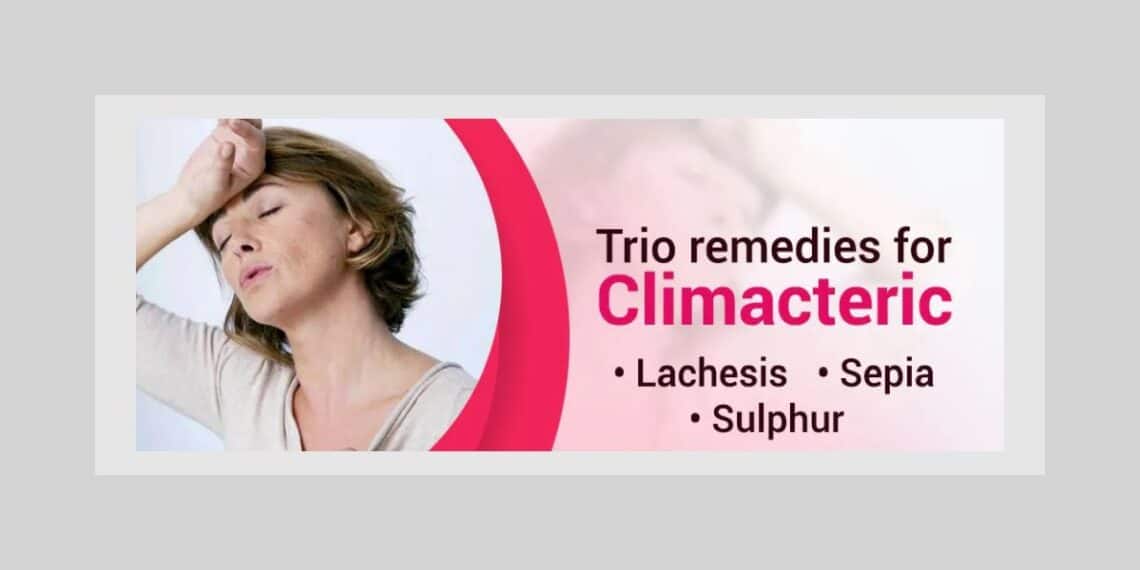Dr. Gros in his “Comparative Materia Medica’ has given many comparisons and contrasts between allied remedies, which have often been of the greatest use to me in selecting a remedy for the sick. There are, however, many more points of distinction between the remedies I have chosen for this study, which I have put in easily available form for my own use, and which I now endeavor to arrange for still more extended and convenient reference. I need hardly say to anyone to whom this study may come that Boenninghausen has been my chief guide.
Beginning with the symptoms according to the Hahnemannian schema, we find affections of the intellect in the highest degree characteristic of Sepia; even indifference, absence of mind, difficult comprehension. Sulphur has less tendency to intellectual disturbance, except as to fantastic illusions. Sulphur has a more decided action on the hair, but the complaints calling for Sepia are mostly found in dark haired people.
Sepia has a comparatively slight affinity for the eyes, although the eye symptoms are numerous. Sulphur, on the contrary, affects almost all tissues of the eye powerfully, with many disturbances of vision. Sepia predominantly acts on the upper eyelid; Sulphur on the margins of the lids. Sepia acts more than Sulphur on the internal ear, causing acuteness of hearing; Sulphur complaints have rather hardness of hearing and noises, especially humming in the ears. Sepia has inflammatory irritation of the tip of the nose; Sulphur, bleeding of the nose on blowing it. Under Sepia the smell is lessened or lost; under Sulphur there is smell of old catarrh in the nose.
Both remedies have pale or yellow face, but red spots on the cheeks decide for Sulphur. The facial eruption of Sepia is around the mouth and on the nose; that of Sulphur more on the upper lip. Sepia has a puffy nose, but Sulphur has freckles on the face. Sepia affects mainly the lower; Sulphur the upper lip.
Sepia has pain and decay of the teeth; Sulphur, disturbances of the tongue and lessened saliva. Sepia has loss of appetite; Sulphur, thirst and aversion to meat. Under Sepia the taste is mostly bitter or salty; under Sulphur it is sour.
The chief gastric disturbance of Sepia is vomiting of bile; but Sulphur has water in the mouth, qualmishness, nausea and sour vomiting. Sepia affects mainly the liver; Sulphur, the stomach. Sulphur has rumbling in the abdomen, while the complaints of Sepia prevail in the hypogastrium. Sulphur has offensive flatus, obstructed stool or diarrhoea, and stools bloody, green, knotty, mucous, offensive, scanty, with ascarides, lambrici, taenia. In comparison with these Sepia has only the bloody stool in equal degree. Sulphur also has aggravation during stool and ineffectual urging to stool, and affections of the perineum. Sepia gives dark urine, with reddish or bloody sediment; Sulphur, increased desire to urinate, flow of urine by drops, involuntary urine at night.
While they act equally on the female genitals, Sulphur has the same tendency to affect the male genitals, especially the penis; but Sepia is suited to discharge of prostatic fluid, and also acts mainly on the va-gina and womb, causing labor-like pains; it is equally indicated in abortion. Both have late menses, but Sulphur also, delay of the first menses, and the periods short, scanty or suppressed. Sepia has a yellow leucorrhoea, which also attends many other complaints.
Sepia has a slimy nasal catarrh, and complaints attended with disordered respiration, but both have oppressed or quick respiration. Both have cough; Sepia with expectoration, which is mostly at night or in the morning, and is purulent or saltish, while the expectoration of Sulphur is bloody.
Sulphur acts upon the external chest and nipples; Sepia equally on the scapulae.
Sepia acts predominantly on the back of the hand; Sulphur on the fingers, but Sepia again on the finger joints. Sepia causes symptoms of the legs; Sulphur, of the back and inner side of the thighs. Sepia acts on the tendo achillis; Sulphur, on the sole of the foot. Sulphur acts on the toes in general; Sepia, on the tips of the toes and in the production of corns.
Sepia symptoms are characteristically better or worse; those of Sulphur worse on awaking. Sepia is worse before sleep. The Sulphur patient is worse from motion of the body; Sepia symptoms are worse from exertions of the mind. This is a distinction which has been to me of great practical value.
Sulphur symptoms are worse before or from suppression of the menses; those of Sepia are worse or occur after coition, menstruation or sexual excesses.
Aggravation after all eating, especially pork, belongs to the symptoms of Sepia; aggravation after taking milk is characteristic of both remedies.
Under Sulphur we find aggravation during or from suppression of sweat; under Sepia during fever and during and after sweat.
Under Sepia, worse from riding either in carriage or on horseback; under Sulphur, worse from running. Under Sepia, worse when sitting; under Sulphur, worse on rising, and when standing. Under Sulphur, worse during sleep; under Sepia, worse during the first sleep.
The Sepia patient is worse from getting wet; but symptoms for Sulphur are worse in the warmth of the bed. It would be easy to draw many more comparisons from our rich records of these drugs, but I fear to weary you with more of what appeals so largely to the memory and so little to the other faculties. From neglecting to consult or consider these differences, many a mistake has no doubt been made, and the patient has missed his best help and the physician his truest pleasure.
I have sought to bring out the differences rather than the likenesses of these drugs. Of the likenesses, it has been said, that we have an almost confusing abundance in our repertories and Materia Medicas. In presenting these contrasts it is not implied that a symptom mentioned of one remedy is not found under the other, only that it is less likely to occur under the one not mentioned, and is further in the highest degree characteristic of the remedy to which it is ascribed.
From :Medical Advance Vol XIX 1887 – Henry C. Allen MD- Editor







Indeed a nice and a very minute comparison which will be more helpful to select a right similimum!
Thanks.
earthquake has epicentre, human lava heat is high magnitude sulphur, heats soles and makes vertex hot, lips red, drinks more water comparative with solid food.sepia is portal vein pelvic area congestion liver bears the brunt spoils the beauty around nose makes it brown, vertex is cool, interests life enjoy cooled thats why known as brown down.one should keep in mind picric acid and phos also for comparison if there is burning along the spine.